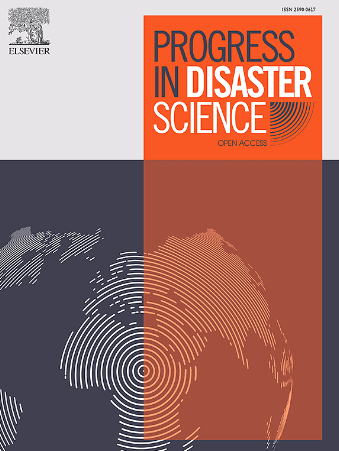Evaluation of spatiotemporal effects of soil depth on shallow landslides and debris flows via coupled numerical analysis
IF 3.8
Q3 ENVIRONMENTAL SCIENCES
引用次数: 0
Abstract
Soil depth critically influences the timing and magnitude of shallow landslides and subsequent debris flows, yet its spatiotemporal effects remain insufficiently understood. This study investigates these effects through landslides–debris flows coupled numerical analysis, employing three soil depth configurations: the slope-based S model, the elevation-based Z model, and the U model, which assumes uniform soil depth across the study area. The 2011 Mt. Umyeon landslides in South Korea, a well-documented event with extensive field survey data, were simulated to validate the simulation results. Model performance was evaluated using the receiver operating characteristic method. Results show that increasing soil depth enlarges the scale of landslides and debris flows while delaying their onset. However, when soil depth greatly exceeds rainfall intensity and cumulative rainfall, slope failure susceptibility decreases, emphasizing the spatiotemporal control of soil thickness. In debris flow simulations, soil depth strongly influenced erosion and entrainment processes, substantially affecting downstream residential damage estimates. Furthermore, our results indicate that when soil depth data are unavailable, the slope-based S model provides more spatiotemporally stable predictions of landslide and debris flow behavior. This study highlights the importance of soil depth in geohazard modeling and advances understanding of rainfall-induced landslide–debris flow hazards in ungauged mountainous regions.
耦合数值分析评价土壤深度对浅层滑坡和泥石流的时空影响
土壤深度对浅层滑坡和随后的泥石流的发生时间和规模具有重要影响,但其时空效应仍未得到充分认识。本研究通过滑坡-泥石流耦合数值分析研究了这些影响,采用了三种土壤深度配置:基于坡度的S模型、基于高程的Z模型和假设整个研究区域土壤深度均匀的U模型。2011年的韩国雨眠山山体滑坡是一个有充分记录的事件,有大量的实地调查数据,为了验证模拟结果,进行了模拟。采用接收机工作特性法对模型性能进行评价。结果表明:随着土层深度的增加,滑坡和泥石流发生的规模增大,发生时间推迟;然而,当土壤深度大大超过降雨强度和累积降雨量时,边坡破坏敏感性降低,强调了土壤厚度的时空控制。在泥石流模拟中,土壤深度强烈影响侵蚀和夹带过程,极大地影响下游居民损失的估计。此外,我们的研究结果表明,当土壤深度数据不可用时,基于边坡的S模型提供了更多的时空稳定的滑坡和泥石流行为预测。这项研究强调了土壤深度在地质灾害建模中的重要性,并促进了对未测量山区降雨引起的滑坡-泥石流灾害的理解。
本文章由计算机程序翻译,如有差异,请以英文原文为准。
求助全文
约1分钟内获得全文
求助全文
来源期刊

Progress in Disaster Science
Social Sciences-Safety Research
CiteScore
14.60
自引率
3.20%
发文量
51
审稿时长
12 weeks
期刊介绍:
Progress in Disaster Science is a Gold Open Access journal focusing on integrating research and policy in disaster research, and publishes original research papers and invited viewpoint articles on disaster risk reduction; response; emergency management and recovery.
A key part of the Journal's Publication output will see key experts invited to assess and comment on the current trends in disaster research, as well as highlight key papers.
 求助内容:
求助内容: 应助结果提醒方式:
应助结果提醒方式:


